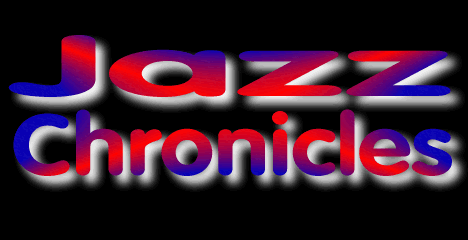 1980s
1980s
After being consigned to the farthest, hard-to-reach shelves in record stores for almost a decade, jazz began to come upfront in the 80s. No more was it being seen as fuddy-duddy and old-fashioned. In fact, in Europe, jazz acquired an influence outside music. The word adorned cars, perfumes and clothes. Jazz was chic and represented the kind of person who was headed upward or was already there. People began to buy more jazz records, long-time listeners rediscovered their dusty, long-unplayed jazz collections and young people sought role models in a flood of talented, technically brilliant newcomers who emerged from a now strengthened jazz college system.
The revival of jazz in the 80s occurred against the background of a rapidly evolving international music community. Russian jazzmen toured the United States. American jazz musicians collaborated with Europeans. Vocabularies coined in Harlem and Kansas City were used with ease by Bulgarians, South Africans, Australians and the Japanese. In fact, some musicians were coining new languages of their own. Saxophonist Jan Gardarek from Scandinavia mixed Coltrane's tenor sound with North European folk music. More technically skilled newcomers began to treat Parker's and Coltrane's innovations as starting points rather than ultimate destinations for their music.
At the centre of this revival was bebop. Forty years ago it was dismissed by many jazz lovers as anti-jazz. Now it was the stylish, swinging sound that most casual listeners recognized as the very essence of jazz. The rebels at Minton's on 52nd Street were far away enough in most memories to be invented all over again in semi-biographical feature films like Clint Eastwood's Bird! and Bertrand Tavernier's Round Midnight. New interest in the bop era brought back some of its most powerful, experienced practitioners - proving that in the years when bebop was supposed to be dead, beboppers were still making superb music.
The careers of veteran players like Dexter Gordon, Art Blakey, Horace Silver and Johnny Griffin were suddenly rejuvenated. Joe Henderson, one of the few saxophonists with an approach similar to Sonny Rollins reminded the 80s that playing 'classic' jazz was more than a matter of running down the notes.
Indeed, a host of older bop-oriented players swung back from fusion to inspired straight-ahead playing. Freddy Hubbard, Woody Shaw, George Adams, Don Pullen, Dannie Richmond - all these came to the forefront. At age 38, after many years of adding inimitable flourishes to others' music, Mike Brecker made his debut album in 1987. His spectacular band included guitarist Pat Metheny, one of the great bop improvisers of his generation. McCoy Tyner a consistent performer since his days with Coltrane was also active, often with a hard-swinging big band.
Pianists like Joanne Brackeen, Steve Kuhn, Geri Allen and Keith Jarret went independent. Jarret was one of the era's most remarkable phenomena, attracting big audiences for an intense, acoustic music.
But it was not just older listeners and a slew of new jazz lovers that fanned the revival. Teenage dancers and young disc jockeys discovered the hard-bop records of the 50s and 60s. A night club scene sprang up all over the world that depended heavily on classic jazz records. Standards were mixed with funk, rap and Latin grooves. Teenagers learned that Art Blakey could not only put a beat under a band - but in the 80s was still alive and hurtling ever onward.
Blakey's bands were still packed with rising young stars - as it had always been. From 1980, his band, Jazz Messengers included trumpeter Wynton Marsalis and saxophonist brother Branford.
Wynton Marsalis spearheaded a group that were labelled as neo-classicists. The search for his musical roots obsessed him all through the 80s. Technically brilliant in both classical music and jazz, he spent the ten years working back from bop-oriented jazz and the influence of Miles Davis's acoustic bands to a sound recalling the voicings of Early New Orleans.
While Marsalis was investigating all of jazz, others had more limited focus. Like coupling swing with other jazz idioms - and even going as far as mixing Cajun music, funk and bop in unpredictable proportions.
Miles Davis made a triumphant return with his album You're Under Arrest. On the same album the guitarist John Scofield combined bop-like melodies with a funky beat and bass lines in a promise of revitalised jazz. Scofield was to go on to become one of the most interesting guitarists/composers of the era. His 1990's Time on My Hands was one of the dsics of the decade.
With the demise of Weather Report, the influential saxophonist Wayne Shorter began playing and composing with his own bands. Chic Corea began to divide his time between an acoustic and electric band. Soul-sax star David Sanborn made the jazzy album Another Hand in the 80s - departing from his more pop-oriented style.
Whle most musicians seemed to be consolidating music of the seventies, Miles Davis, inspite of failing health, kept looking forward. His posthumously completed last record Doo-Bop reflected the dance rhythms of hip-hop and insistent, emphatic accents on rap. Davis's solos were as jazz-like as anything he had recorded in 25 years - and suggested a direction that contemporary jazz may go.
